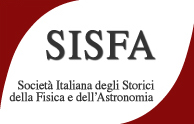Speaker
Description
In the early 1600s, the age-old problem of knowing the exact position on both land and sea became more and more urgent, and the great maritime powers, starting with Spain, instituted very large prizes for those who would find a workable solution. Galileo, after the discovery of Jupiter's satellites, thought of using the periodicity of the motion of the Jovian moons to propose a method that would solve the problem. After several years of lengthy observations and drawing up tables for predicting the positions of the satellites, attempts to propose his method, first to the Spanish court and then to the government of the independent Dutch provinces, proved unsuccessful due to both the inherent difficulties of the method and the inaccuracy in the calculations of the satellite tables. In the last years of his life, recognizing in the young mathematician of Genoese origin, Vincenzo Renieri, excellent skills as both observer and calculator, he entrusted him with the manuscript material he had collected over many years of study, hoping that Renieri would be able to compose tables that would solve the problem. Renieri applied himself to this task with great zeal, first relying on the master's advice and then, after his death, continuing to try to improve the quality of the calculations.Unfortunately, Renieri's sudden death prevented him from completing the work, and the disappearance of the materials he was working on did not allow someone else to continue the work.
After presenting a brief biographical profile of Renieri, I will consider what information we can draw from the manuscript materials of Galileo and his pupil, recovered through the personal efforts .of the grand dukes of Tuscany and preserved in the National Central Library of Florence.

